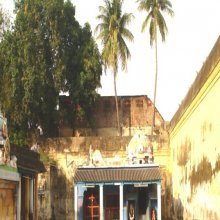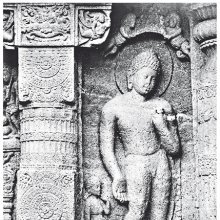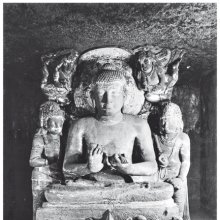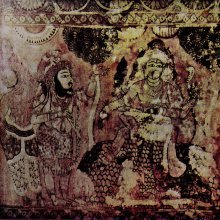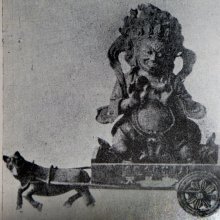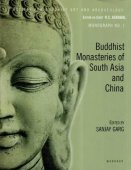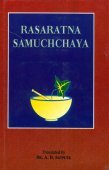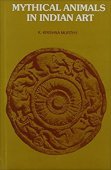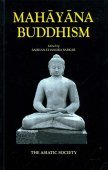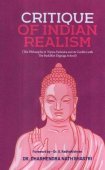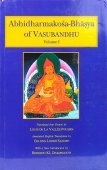Study, Studying: 2 definitions
Introduction:
Study means something in Hinduism, Sanskrit, the history of ancient India. If you want to know the exact meaning, history, etymology or English translation of this term then check out the descriptions on this page. Add your comment or reference to a book if you want to contribute to this summary article.
Images (photo gallery)
(+22 more images available)
In Hinduism
Yoga (school of philosophy)
Source: ORA: Amanaska (king of all yogas): A Critical Edition and Annotated Translation by Jason BirchStudy (i.e., studying a particular doctrine) is denoted by the Sanskrit term Paṭhana, according to the Amanaska Yoga treatise dealing with meditation, absorption, yogic powers and liberation.—Accordingly, as Īśvara says to Vāmadeva: “[...] Not by studying the doctrines (siddhānta-paṭhana) of scriptural exegesis, logic, planets and mathematics, nor by the Vedas, Upaniṣads, Dharmaśāstras [and the like]; not even by lexicons nor metre, grammar, poetry nor rhetoric; the sage's attainment of the highest reality is gained only from the oral teachings of his own Guru. [...]”.

Yoga is originally considered a branch of Hindu philosophy (astika), but both ancient and modern Yoga combine the physical, mental and spiritual. Yoga teaches various physical techniques also known as āsanas (postures), used for various purposes (eg., meditation, contemplation, relaxation).
India history and geography
Source: Singhi Jain Series: Ratnaprabha-suri’s Kuvalayamala-katha (history)Study (of the tenets of religion and philosophy) was an important part of the spiritual life in the Hermitages of ancient India, as vividly depicted in the Kathās (narrative poems) such as Uddyotanasūri in his 8th-century Kuvalayamālā (a Prakrit Campū, similar to Kāvya poetry).—Page 87.20-28: Here is a vivid description of the intellectual and spiritual life in the Aśrama of a Jaina Muni, somewhat similar to that in the hermitage of Divākara Mitra described by Bāṇa in the Harṣacarita where scholars studied, devoted and held controversies, disputations and exchange of views on several points of religion and philosophy.[...].
Uddyotanasūri gives a list of twenty-one methods of study and discussions and approaches to the tenets of religion and philosophy, e.g.,
- self-study,
- teaching,
- reflecting,
- resolving doubts,
- exposition by those who had grasped the meaning,
- listening to the texts after reciting them,
- composing new poems or Stotras,
- practising meditations and
- attending to the service of teachers,
- learning of rules of Vinaya,
- observing of Triratna in the form of darśana,
- observing of Triratna in the form of jñāna,
- observing of Triratna in the form of cāritra,
- extolling the knowledge of the Tīrthaṃkaras and their Gaṇadharas,
- interrogating about points of doubts about the scriptures,
- practising the art of disputation,
- developing points of controversies in matters relating to Dharma and Adharma,
- deliberating about Bondage and Salvation of souls,
- pursuing the stages of Śukladhyāna and Dharmadhyāna,
- condemning the evils of egoism, pride and anger and greed, and
- speaking against the suffering of the world.

The history of India traces the identification of countries, villages, towns and other regions of India, as well as mythology, zoology, royal dynasties, rulers, tribes, local festivities and traditions and regional languages. Ancient India enjoyed religious freedom and encourages the path of Dharma, a concept common to Buddhism, Hinduism, and Jainism.
See also (Relevant definitions)
Query error!
Full-text (+5616): Svadhyaya, Adhyayana, Brahmayajna, Anadhyaya, Vedabhyasa, Anadhyayana, Vidyabhyasa, Brahmabhyasa, Pathana, Vedadhyayana, Asvadhyaya, Patha, Adhyaya, Samaptika, Parishilana, Adhiti, Vedadhigama, Rishiyajna, Adhigama, Sahadhyayana.
Relevant text
Search found 581 books and stories containing Study, Studying, The study; (plurals include: Studies, Studyings, The studies). You can also click to the full overview containing English textual excerpts. Below are direct links for the most relevant articles:
Journal of Indian Society of Periodontology
Periodontal disease prevalence: Right time to address the challenges < [Volume 22 (issue 3), May-Jun 2018]
Biomarker research: From bench to publication…but gasping to reach chairside < [Volume 27 (issue 4), Jul-Aug 2023]
Periodontal status in multibracket appliances: age and gender role. < [Volume 26 (issue 4), Jul-Aug 2022]
World Journal of Pharmaceutical Research
Mental distress in undergraduate medical students at Majmaah University < [2018: Volume 7, March issue 5]
Stress level among dental students, it’s effect and coping strategies < [2017: Volume 6, November issue 14]
Assessment of teaching and evaluation methods in pharmacology college < [2013: Volume 2, November issue 6]
Informal Education of Sanskrit in Kerala (by Jayasree M.)
22. Classical Music and Dance forms < [Chapter 3 - Informal Education of Sanskrit in Kerala: the Traditional Streams]
10. Survey on Informal education of Sanskrit in the field of Ayurvda < [Chapter 5 - Sanskrit and Ayurveda: Role of Informal education]
3. Brahmaswam Madham < [Chapter 3 - Informal Education of Sanskrit in Kerala: the Traditional Streams]
Ayurvedic approach to clinical medicine – part ii < [Volume 4 (issue 4), Apr-Jun 1985]
Medico-botanical study of Yercaud hills, Eastern Ghats, Tamil Nadu < [Volume 30 (issue 4), Apr-Jun 2011]
Pharmacognostic and phytochemical study of Hemidesmus indicus roots < [Volume 21 (issue 4), Apr-Jun 2002]
Markandeya Purana (Study) (by Chandamita Bhattacharya)
1.7: Importance of the Purāṇas < [Chapter 1]
1.11: Importance of the Mārkaṇḍeya-purāṇa < [Chapter 1]
1.1: Introduction to the Purāṇa Literature < [Chapter 1]
Vakyapadiya of Bhartrihari (by K. A. Subramania Iyer)
Verse 1.63 < [Book 1 - Brahma-kāṇḍa (or Āgama-samuccaya)]
Verse 3.14.493 < [Book 3 - Pada-kāṇḍa (14): Vṛtti-samuddeśa (On Ccomplex Formation)]
Verse 3.14.491 < [Book 3 - Pada-kāṇḍa (14): Vṛtti-samuddeśa (On Ccomplex Formation)]
Related products
(+52 more products available)
